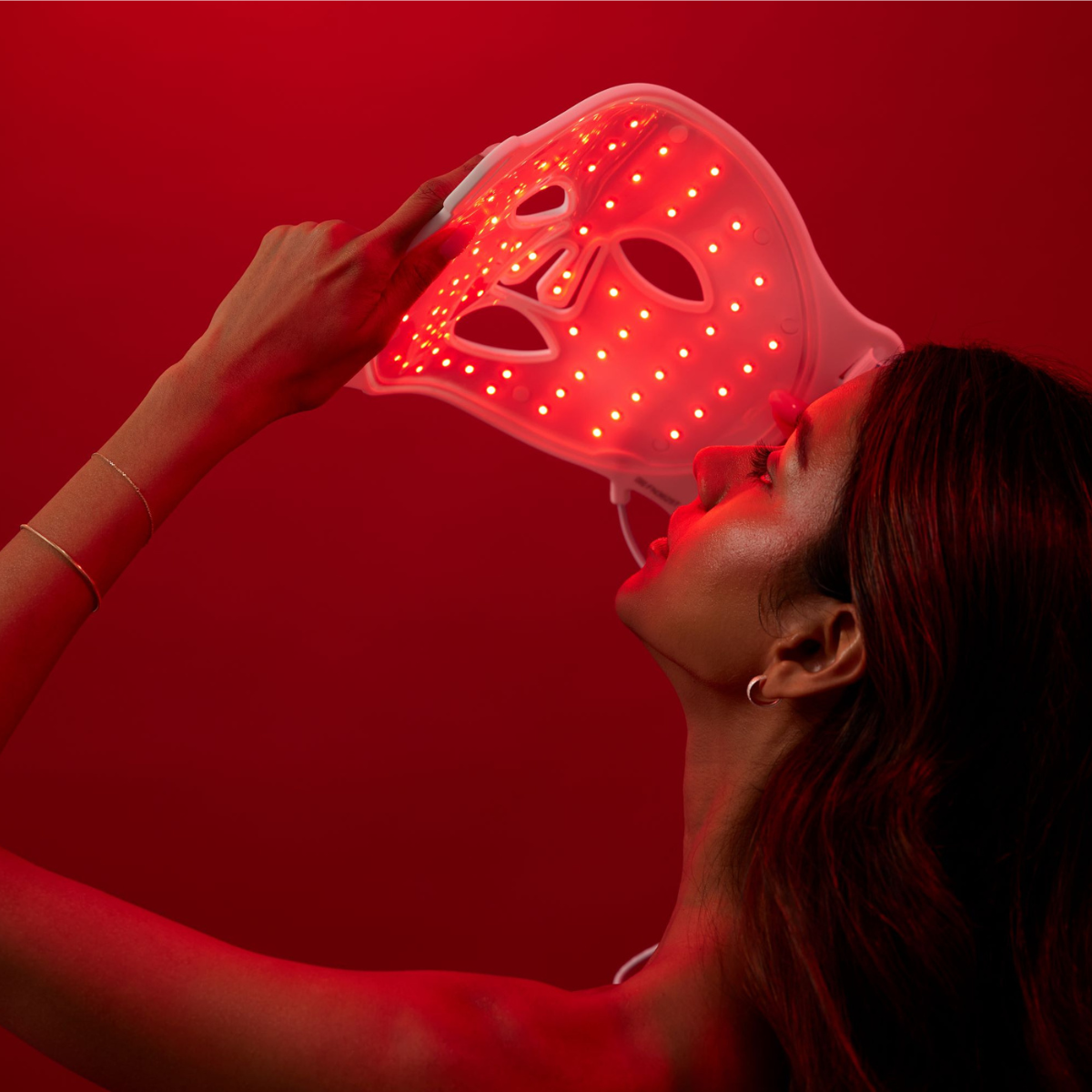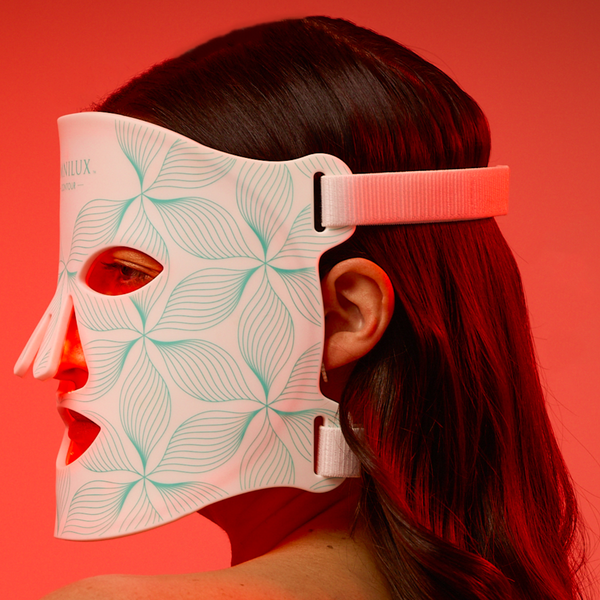
What to Look for in an LED Mask
LED masks are the rising star of the modern skincare industry, and it’s not hard to see why. LED light therapy has been clinically proven to treat a wide range of skin conditions – including fine lines, wrinkles, acne, and hyperpigmentation (and so many others) – without invasive methods. Plus, innovative mask designs can be used from home, allowing for frequent use and more noticeable results.
But, to make the most of these benefits and protect the skin, selecting a high-quality LED mask is essential. Not all devices are created equally, and it’s crucial to find a device that’s optimized to treat the user's particular skin concerns and to be effective.
Below, we’ll go over the qualities to look for in an LED mask so your clients and customers can trust their purchase (and see real, long-lasting results).
1. Wavelength
Wavelength is the first factor to consider in any LED mask search. There are many different wavelengths on the electromagnetic light spectrum, and not all of them can benefit the skin. While some wavelengths are clinically proven to improve specific skin concerns, others can actually harm the skin.
To protect the skin, it’s critical to select an LED mask that uses clinically-studied wavelengths. If a device doesn’t reveal the specific wavelengths it uses, we recommend avoiding it. When it comes to treating the skin, better safe than sorry.
According to Dr. Jared Jagdeo, a board-certified dermatologist and physician-scientist: “I always recommend opting for LED light wavelengths/colors that have the most clinical data supporting their use such as blue, red and near-infrared. There’s not much to support yellow, green, amber, etc.”
The light wavelengths that have been scientifically proven to support skin health include:
Red Light (633nm)
Clinical research has found that the red light wavelength of 633nm reduces inflammation, pigmentation, and redness. It also stimulates cellular repair and boosts circulation to the skin for a brighter, more vibrant complexion. The 633nm wavelength is featured in our Omnilux Contour line, Omnilux Clear, Omnilux Men and Mini devices.
Near-Infrared Light (830nm)
Near-infrared light targets the deeper fibroblast cells, which contribute to the formation of collagen and elastin proteins. This results in firmer, plumper, and more youthful-looking skin. The 830nm near-infrared light wavelength is clinically proven to support facial skin rejuvenation.
The 830nm wavelength is featured in our Omnilux Contour, Omnilux Men and our Mini Eye Brightener and Mini Skin Corrector devices.
Near-Infrared Light (1072nm)
This wavelength of near-infrared light penetrates deeper into the skin, making it ideal for men’s thicker skin. Combined with the 633nm and 830nm wavelengths, the 1072nm wavelength has been clinically proven to rejuvenate men’s skin. It’s featured in our Omnilux Men device.
Blue Light (415nm)
The 415nm blue light wavelength works on a cellular level to neutralize and kill acne-forming bacteria on the surface of the skin. It’s been proven to help treat mild to moderate acne vulgaris.
The 415nm wavelength is featured in our Omnilux Clear and Mini Blemish Eraser devices, which treat and prevent acne breakouts.
Combination LED Light Therapy
Some LED light therapy devices combine wavelengths to more effectively treat skin concerns, like signs of aging. Dr. Jagdeo notes:
“A combination of red and near-infrared light, such as those in the Omnilux devices, is ideal for treating mature skin. The red light (633nm) is proven to increase cellular energy which essentially kick starts cellular renewal to reduce inflammation, redness and correct pigmentation and photodamage. The near-infrared light (833nm) is where you’re going to see the most wrinkle-reducing benefit as this light penetrates much deeper into the skin to target fibroblast cells, which stimulate new collagen and elastin production for plumper, firmer and more youthful-looking skin.”
2. Clinical Research
Many of the LED devices available today aren’t backed by clinical data to prove their safety and efficacy. As we mentioned above, it’s important to verify the legitimacy of any LED device with clinical studies before purchasing. Most LED devices on the market today do not have their own clinical data supporting their claims, so if you can’t find any clinical research to support the device, we wouldn’t recommend investing in it.
Omnilux technology has been used in over 40 peer-reviewed clinical studies, which you can view in our clinical bibliography.
3. Output, Intensity, and Proximity to Treatment Area
The user's skin must absorb the optimized wavelengths of light to reap the complete benefits of LED therapy. To ensure optimal absorption, consider the device’s output, intensity, and proximity to the skin. You can think about these factors like a flashlight shining on a wall – the closer you get to the wall, the brighter and more intense the light becomes.
With this in mind, we recommend choosing an LED mask that’s constructed of flexible, medical-grade material, rather than a hard-shelled mask. This ensures that the device can mold around the curves of the treatment area and can absorb as much of the emitted light as possible. Hard-shell LED masks aren’t flexible and may leave areas of the face untreated, leading to uneven results. The device straps are also important considerations, as flimsy or poorly positioned straps can effect the fit of the device to the treatment area.
All Omnilux LED products use medical-grade, flexible silicone, and our face masks are equipped with two adjustable straps (one along the crown of the head, and one along the nape) allowing the LEDs to sit directly on the skin. This means that the masks deliver a high concentration of light at a lower output, providing safe, even results.
4. Number of LEDs
More LEDs aren’t necessarily better in a light therapy device, as the irradiance in each LED bulb will spread across the skin. However, when the LEDs are positioned with too much space between them, it lowers the light concentration and may compromise the treatment results.
A higher number of LEDs positioned with minimal space between them will facilitate more even results. The current number of medical-grade LEDs in Omnilux devices include:
Contour Face: 132
Omnilux Clear: 132
Omnilux Men: 132
Contour Neck & Décolleté: 108
Contour Glove: 144
5. FDA and Safety Clearances
The Food and Drug Administration, or FDA, reviews medical devices to determine which are safe and effective. The FDA’s seal of approval is an important quality to look for in LED light therapy masks, as it verifies the manufacturer’s claims. Many LED devices on the market today are not agency-cleared and without clearance from the experts at the FDA (and international equivalents), you can’t be certain that a device is safe and effective for your skin. Therefore, we can’t recommend LED device brands that haven’t been cleared by the FDA.
At Omnilux, safety and efficacy are of utmost importance. All of our devices have been FDA-cleared, TGA-approved, and CE-certified. Additionally, all of our devices conform to international safety standards, including eye safety.
Selecting an LED Mask for Your Needs
Your client's skin deserves the best of the best, but not all LED light therapy devices uphold this standard. Additionally, given that an LED mask is a sizable investment in skin health, it’s worth thoroughly vetting the options.
It's true that medical-grade LED masks can be pricey. But, to protect and effectively treat your skin, choosing a clinically proven, top-quality mask is worth it. If your clients are just getting started with LED therapy and aren’t sure if LED light therapy is right for them, we’d suggest recommending they start with one of our Minis, the smaller, more affordable (but no less powerful) alternative to our full-size devices!
Consult the information above as you navigate your clients through LED masks available today to ensure that their choice is safe, effective, and aligned with their skincare goals.


